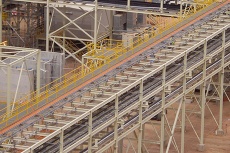Load over Span Considerations
Understanding the relationship between load and span will help you choose the right strut or cable support product…
An important general rule of thumb to remember about most linear components is that they can support more weight, and exhibit less deflection at their maximum allowable load, when they are installed with shorter spans.

In the case of electrical products such as cable tray or ladder (which are load rated in kilograms per metre), the span is the distance between support points, separate from the overall length of the tray or ladder itself. Support points are often trapezes suspended from threaded rod, cantilever brackets, or other strut systems.
In many cases, the higher your desired load, the shorter the maximum allowable spans become, because shorter spans can support more weight per metre. Shorter spans also result in less deflection of the installed product. However, if you require longer spans and less fixing points for your tray or ladder, this can be achieved by reducing the maximum load per metre allowable over that longer span. Also, if you do not need the maximum load per metre of a certain product, your installation can often simply use longer spans and less support points.
Support Span is the distance between support points for your linear component installation.
Overall Length is the total length of your component installation regardless of the quantity of supports.
A Longer Support Span results in
- Less Required Support Points
- Lower Load Capability
- Greater Deflection

A Shorter Support Span results in
- More Required Support Points
- Higher Load Capability
- Less Deflection

Before making a decision, check individual product specifications against your site requirements.




